One of the most traditional and deeply-rooted cultural manifestations of Galicia is the Entroido, which is the equivalent of Carnival in Spanish. Just as it happens in Venice, Rio de Janeiro, Cadiz, or Las Palmas de Gran Canaria, this festival is a highlight in the Galician calendar. Although not as widely known to the general public, the entroidos are a substantial part of the Galician cultural heritage. All the folklore, joy, mischief, and cuisine blend together to celebrate a deeply ingrained festival throughout Galicia. Join us in a parade to experience the Galician Carnival through the Camino de Santiago!
Origins and history of Carnival and Entroido
Experts link the origin of Carnival to pre-Roman cultures that celebrated the upcoming change of season. Ancient European peoples celebrated this festival as a spell against winter, asking for the sun to shine again and the earth to bear fruit. The celebration of the end of winter, the beginning of spring, and the hope for good harvests and fertility form the basis of this festival.
It is subsequently associated with Greco-Roman festivities such as the Bacchanals, Saturnalia, and Lupercalia. In these festivals, honor was paid to and practiced in excess of alcohol, sexual disinhibition, and uncontrolled eating. All this frenzy of vices was hidden under anonymity, hence the use and origin of masks, which added a mysterious aura.
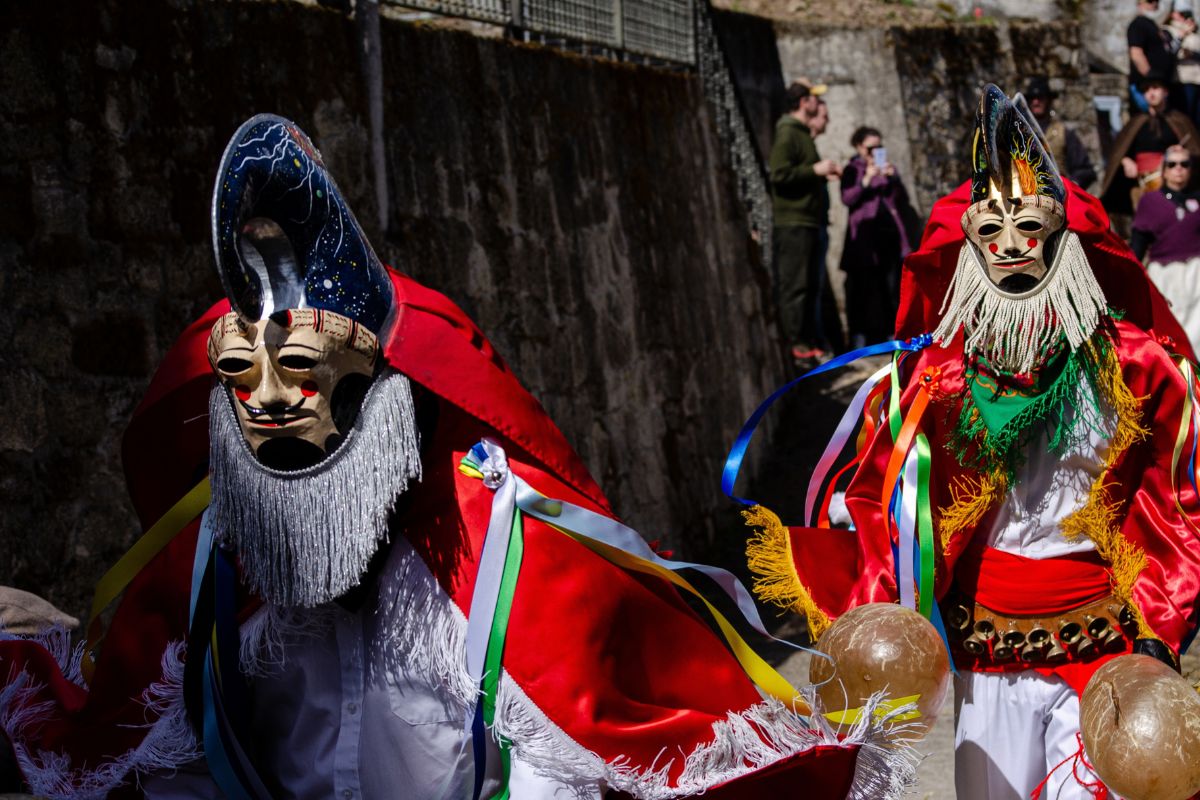
Masks of Entroido, the Carnival of Galicia
The festival, deeply rooted in society, did not disappear with the officialization of Christianity. Roman Emperor Constantine the Great, in the year 325 AD, established Lent in the calendar, and Carnival remained as the time period before it. Almost everything was celebrated and allowed, for afterward would come forty days of abstinence, devotion, and respect for the crucified messiah. Despite the religiosity of the Middle Ages, Carnival managed to survive and reach our times.
Where do the names come from?
The term “carnival” comes from the Latin carnem levare, meaning “to remove meat“, referring to the abstinence from meat in the upcoming Lent. Other experts point to carrus navalis, a Roman celebration in Egypt in honor of the goddess Isis, with a procession of ships.
The term “entroido” is recorded in history for the first time in a 1229 document preserved in the monastery of Sahagún. The word would come from the Latin introitus, meaning “introduction” or “entry”. That is, it is a period prior to Lent, a time of festivity before another of respect. This was already mentioned in the Libro de Buen Amor (Arcipreste de Hita, 14th century) with the gastronomic battle of Don Carnal and Doña Cuaresma.
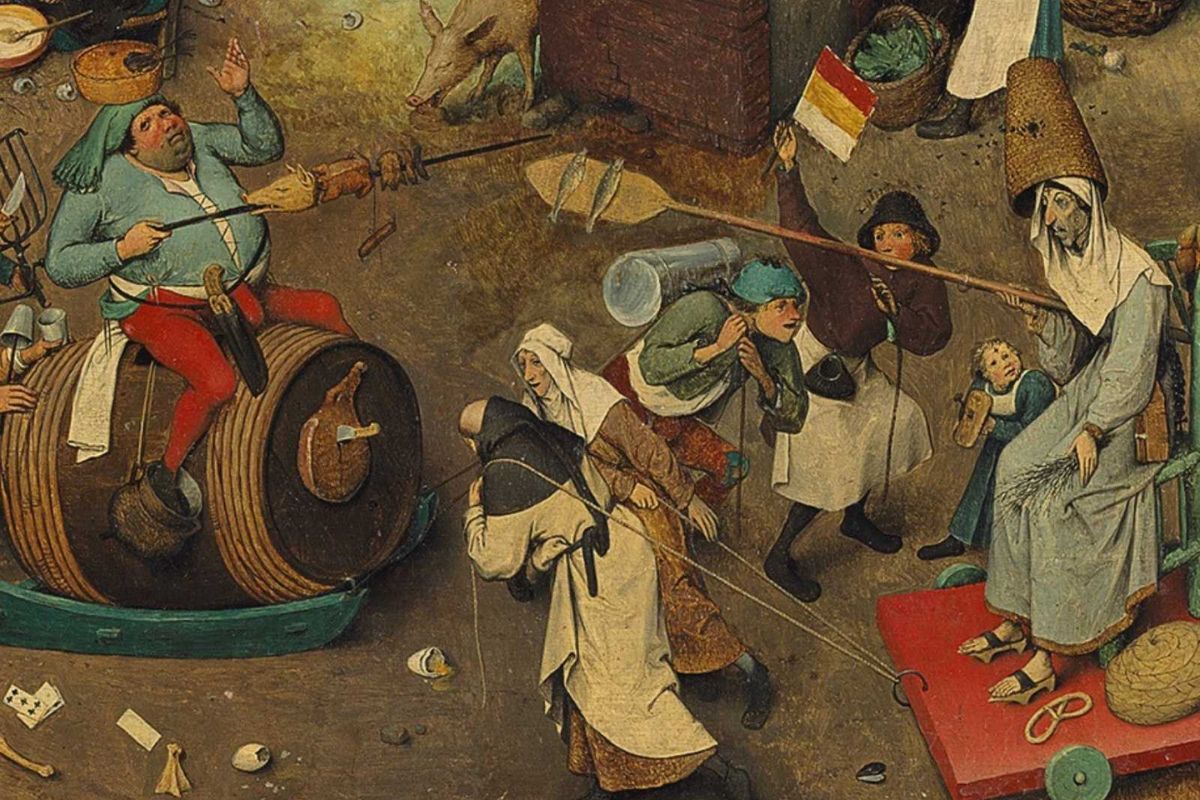
Detail of a painting of Bosch, with sinners and vicious
Meaning of Entroido in Galicia and tips to enjoy it
The entroido is a deeply rooted festival with a rural and participatory character in Galicia. Despite being banned between 1937 and 1948 throughout Spain for its libertine nature, in Galicia, it continued to be celebrated, especially in rural areas. It was not until 1977 that it was celebrated again with complete normality.
The Entroido in Galicia is more than just a festival. Color, joy, parades, comparsas, and processions invade the streets. In many cases, it starts being celebrated weeks before the actual date of celebration, that is, Carnival day itself.
While the most famous are celebrated in the province of Ourense, they can be enjoyed throughout the Galician geography, albeit with local differences. In any case, the entroidos are characterized by the active participation of attendees, as well as a close link with gastronomy.
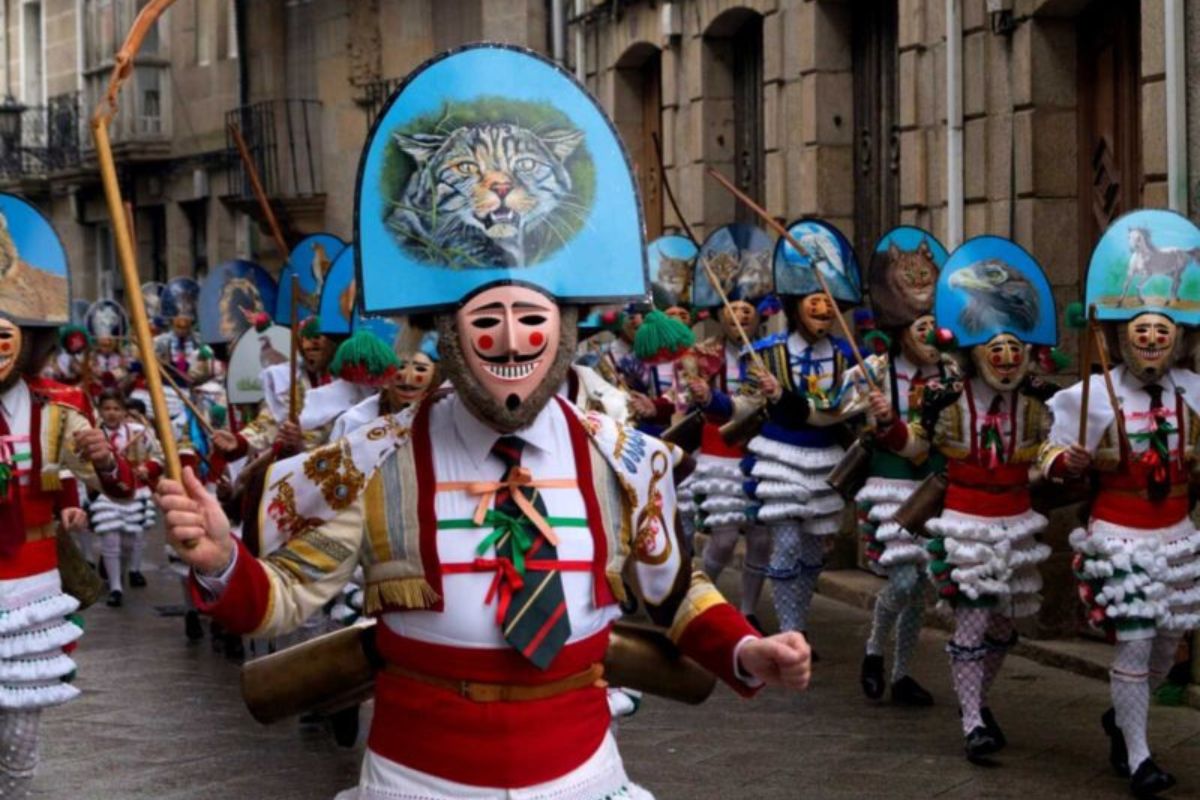
Typical parade of an Entroido in the province of Ourense
Go in costume!
This is our first piece of advice that you should follow and a rule that you should respect. Anyone, local or visitor, can join the celebration, but there is one unbreakable requirement: to attend in costume, regardless of the choice of costume.
Locals highly value the involvement of participants, and attending Entroido without a costume is a risk, especially in the province of Ourense. The typical characters of Carnival in Galicia, the Entroido, will show no mercy and may inflict possible punishments. These, which vary by locality, can be:
- receiving spankings or hits with sticks or whips;
- being covered in flour or mud, in extreme cases, mixed with live, hungry ants, or soaked in vinegar;
- inviting to a round of wines.
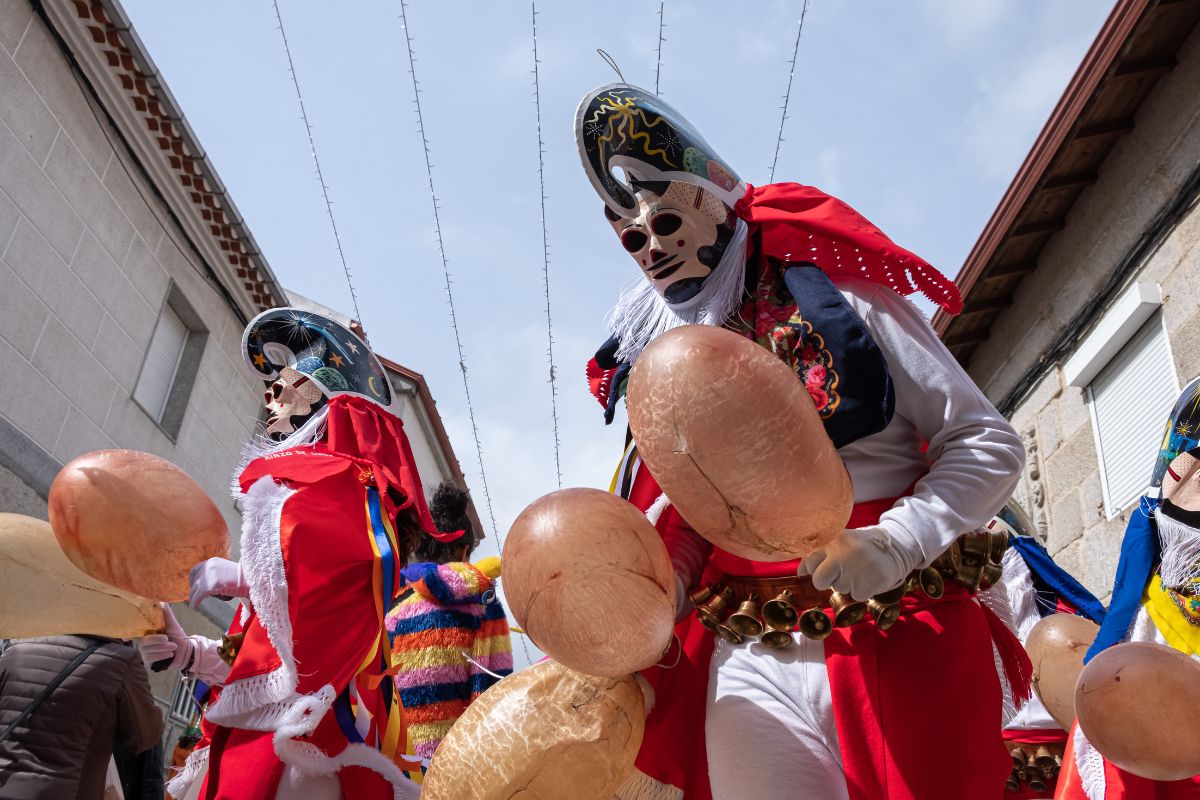
These Pantallas de Xinzo de Limia, characters of the Entroido from this town in Ourense, will intimidate you with bladders if you are not in costume
Eat, drink, and enjoy!
On the other hand, we mentioned the extremely important gastronomic element. Galicians really enjoy partying, good food, and drink. Therefore, the Entroido must crown its celebrations with the finest Galician cuisine.
Lavish meals based on pork, such as cocidos, lacón con grelos, cachucha, androlla, etc., are the stars. Their ingredients come from the traditional slaughter of this animal in November, as well as from winter agriculture. Sweets such as filloas or ears also stand out, and of course, everything washed down with wines and liquors. And why not a queimada?
As an ethnological testimony of a culture, many local entroidos are, to this day, Festivals of National and International Tourist Interest. Since 2017, as a whole, the Entroido is Intangible Cultural Heritage of Spain, and since 2024 it is a Cultural Asset of Interest.
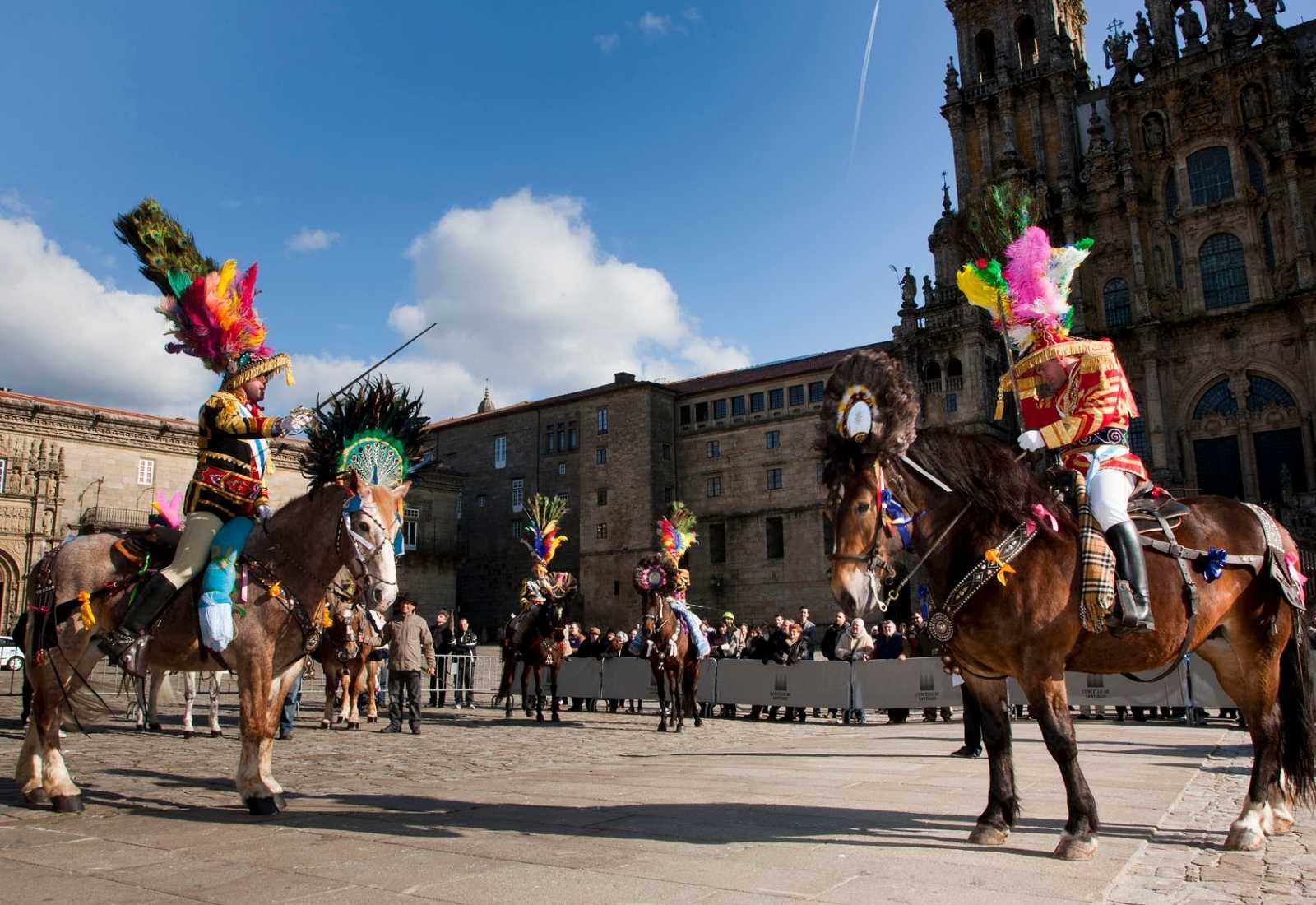
The Xenerais do Ulla, characters of the Entroido of Santiago, in the Plaza del Obradoiro
Entroidos on the Camino de Santiago
Those who undertake any of the routes of the Camino de Santiago in Galicia during the time of entroido will be able to enjoy a millenary tradition. In addition to the Camino itself, you can enjoy a lot of magic, joy, and a certain dose of “danger” that only seeks the healthy amusement of the celebrants.
If you want to experience the traditional entroido, through the Sanabrian Way, you will pass through Laza, Ourense, or Ponte Ulla, and other localities where you can discover this festivity. Additionally, through this route or the Winter Way, you will also pass through Lalín: it is not exactly the capital of Entroido, but it is of the cocido. Its Cocido Fair is an International Tourist Interest Festival, with this dish as the star and protagonist of the carnival.
A good plan to get to know this year’s Entroido in Galicia is to dress up as a pilgrim and do the Camino de Santiago in winter. This way, you will kill two birds with one stone and enjoy two unique experiences with all the magic of Galicia.

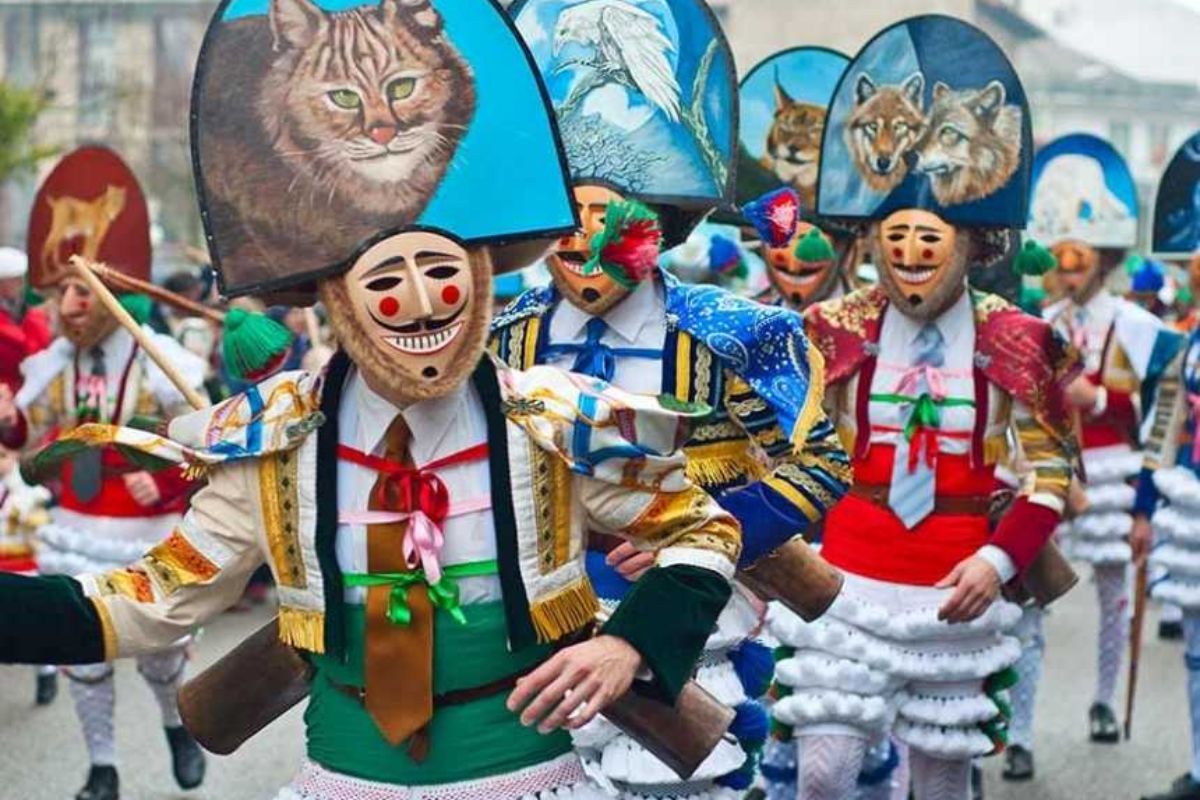










Leave A Comment